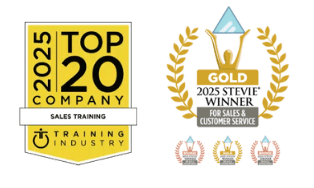“But they have much better relationships than we do…”
How many times, as sales managers, do we hear this about the competition from our sales executives during deal reviews or coaching sessions? Our first question should be – what evidence do we have that this is the case? If it is true, then the reality is our competitors have almost certainly earned those superior relationships over time.
We all understand the only lasting differentiator we have as sales professionals is our relationships with our customers. All other seemingly competitive advantages can, and will, change with time. We need Supporters, of course – clients that will help us to be successful and speak positively about our company and our solution, product, or service. But the magic happens when we have a Partner Ally inside the Base of Power of our client organization. This is a person that has a vested interest in our success and will stand and promote our solution against competition from others when we are not in the room.
So, how do we build these superior relationships, and more importantly, how do we turn a Supporter into a Partner Ally? It’s all about understanding, then enabling—two critical factors in any sale.
First – The Business Priorities.
Every executive has a handful of key Business Priorities / objectives that need to be met to succeed. Our value proposition must resonate with one or more of these priorities to gain attention. Then we need executive action, even if we have gained access for an initial meeting. If we don’t get this, it is unlikely we will get a second one.
Once interested and engaged, based on a belief that our value proposition will help our client to deliver on their Business Priorities, we will have a Supporter. This is great… but not enough to optimize our chances of success.
Second – The Personal Agenda.
Executives also have Personal Agendas. Such as a promotion or recognition of having done an outstanding job for the company. If we can demonstrate that not only can we help to deliver our client’s Business Priorities, but also help them achieve their Personal Agendas, then and only then, will we secure our Partner Ally.
For instance, a few years ago, before “the cloud,” I was leading a team bidding for a major data center outsourcing deal. After several months, our company and one other team were all that remained. The competitor had personal sales relationships with the client spanning twenty years. We only had the relationships built with the Procurement Team, with an occasional appearance from the CIO. Other than these, we were blocked from contacting any other business leaders, let alone C-Suite executives. The good news, however, was that data center outsourcing was at the very heart of our core capabilities.
In reality, we knew we were being used as a stalking horse. What could we do?
Through research and in discussion with one of our more junior supporters, we found out the person acting as a third-party advisor to the client (an external advisor), stood to gain. She was going to make partner status once the transaction was completed and specific commercial goals had been achieved for the client. That meant our associate partner needed two big horses in the race to the finish.
Having arranged a meeting one-to-one with our associate partner, I explained we were delighted to have made the final down select stage of the competition. However, I had a problem I needed his help with, as I had to go back to our board next week to request a further hefty bid budget to complete the competition.
“What’s the problem?” he asked.
First, we agreed client’s requirements were at the very sweet spot of our capabilities… of course, he knew that already. So, we could do what they needed – no question.
Next, we talked through how difficult it is to put the best foot forward in the proposal process, given the significant lack of relationships. Not only did this make it extremely difficult to deliver the very best solution to the client, but also placed us in a position where the playing field was so unlevel, that it could cause my executives to be inclined to no-bid.
After what seemed like quite a while, he turned to me and asked, “What do you need?”
Bingo! We requested thirty minutes with each of the C-level executives we believed would be most influential in the final decision-making process. We would explain that while we understood the buying criteria set out in the RFP, we wanted to understand the critical success factors each executive had personally for this major project, for their part of the business.
Once we had these meetings arranged, we prepared meticulously and ensured we had engaged with business-focused conversations, relevant to each executive, AND we respected our scheduled thirty minutes.
It worked! From there we had regular access and were able to craft our value proposition away from technology towards business outcomes and develop strong working relationships.
A few months later, against all the odds, and much to the surprise of our incumbent competitor, we were awarded a $1 billion, ten-year contract with a major financial services company.
Oh… and our associate partner? Now a very successful senior partner at another international consulting company.
Make it personal for the win.
Personal Challenge:
For each of your “must win” deals, work with your sales lead and answer: 1) Do we know who will be involved in making the decision? 2) Who could veto a decision? 3) Our relationship with each of the key decision makers? 4) Our Partner Allies? 5) Evidence? 6) Our call / close plan with our Supporters / Partner Allies?




